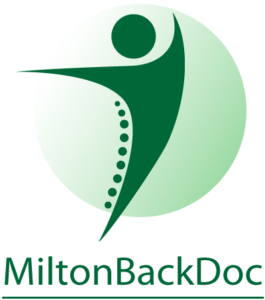Over the past several months, we have gotten several new massage therapy patients, and many of them have the same questions. So I’ve been inspired to write this blog to hopefully address the common question: “What should I expect to happen at my massage appointment?”
INTAKE FORMS
At any clinic or spa that offers Registered Massage Therapy services, the first thing you will encounter will be the receptionist, and they are likely to hand you some paperwork before you get started. This is why it is important, particularly at your first visit, to be 10 or 15 minutes early for your appointment.
A standard intake form will ask you for some basic personal information. If you have concerns about providing your personal information, keep in mind that the regulatory body for Registered Massage Therapists (the CMTO in Ontario) require that your personal information is taken. This is in order to uniquely identify you as a patient, among other things.
The intake form is also likely to include some health history questions which will help the Massage Therapist understand any health issues you have and identify any contraindications if there are any.
Another good reason to be early for your appointment is to prepare yourself! If you have a few minutes after completing the intake forms, take the opportunity to go to the bathroom and shut off your cell phone. Nobody wants to be interrupted during a massage (neither patient nor the therapist!)
If you’d like a few more tips about how to help your therapist give you the best treatment, check out our previous blog about that HERE.
IN THE TREATMENT ROOM
When it is time for your appointment, and your therapist is ready for you, they will usually bring you from the waiting area to the treatment room. Before you get on the table, the therapist will have a short discussion with you.
First, the conversation that you have with your therapist will cover consent. Some intake paperwork may have already had a consent form included, but it is your therapist’s responsibility to make sure that you understand what you’ve consented to.
Secondly, the therapist will discuss your health history, as well as what areas you are interested in having treated. This will help the therapist tailor the treatment to your needs, and improve the effectiveness of the session.
Overall, this pre-treatment conversation is generally longer at your first appointment than it will be at future appointments. Ahead of your next session, your therapist will be able to refer to their notes in your chart to familiarize themselves with your health history and the treatments that you have received before, and so the initial conversation is usually more brief.
GETTING ON THE TABLE
After you have discussed what your treatment will look like for this appointment, the therapist should leave the room to allow you to undress appropriately and get on the treatment table.
In terms of how undressed to get, this is completely up to you and your comfort level. Many folks strip 100%, and are under the sheets without clothing whatsoever, however it is not uncommon for patients to leave all their clothes on either. And, of course, there are an infinite number of levels in between. However undressed you get, it will not bother your therapist – they probably have experience with every level of undress. Your therapist will work with you no matter what.
If you have any other questions about consent and level of undress, check out another of our blogs HERE.
THE TREATMENT
Once you are on the table, and the Massage Therapist comes back into the room, your treatment will begin. Many folks wonder if their therapist will expect them to chit-chat, or if they expect the patient to lay there quietly.
Most therapists will tell you that the answer to this question, again, lies in the hands of the patient. Most therapists will take their cue from the patient. If you as a patient would prefer to have a light conversation about the weather, your therapist is likely to reciprocate. Likewise, if you’d just prefer to relax and enjoy some quiet time, your therapist will probably keep quiet too.
Bear in mind, that your therapist will want to know that the treatment they are delivering is to your liking. They should check in with you regularly to ensure that you are comfortable with the pressure they are delivering, and that the techniques they are using feel OK. Be prepared to let your therapist know if you like or dislike anything in particular.
After working with many RMTs, I find that they are most disappointed with patients who do not return because they were unhappy with the treatment, but also didn’t bring it up in the treatment room. Communicating how you like your treatment will not only allow the therapist to modify their approach if necessary, but it will also help them to develop as a therapist overall.
GETTING OFF THE TABLE
Once the hands-on portion of your treatment is finished, the therapist will leave the room to give you a few minutes to get up off the table and get dressed in private.
It is not uncommon after a Massage Therapy treatment to feel light-headed. Many patients experience orthostatic hypotension (feeling dizzy or light-headed after maintaining one position for a long time – such as lying down). Additionally, Massage Therapy tends to promote blood flow to your muscle tissues, and this can lead to an overall, temporary drop in blood pressure. As a patient, you should be aware of this, and take your time getting off the table.
POST-TREATMENT CHECK-IN
Once you are up and dressed, your therapist will want to check in with you. They will want to know how you feel, how you felt during treatment, as well as if any areas are still sore (or if any NEW areas are sore!)
Many RMTs will also take this opportunity to provide you with some home-care advice. This may involve some stretches, or perhaps some strengthening exercises. These are usually provided with the intent to prolong the effects of the treatment, and to help you improve your physical well-being long-term.
Note that this time, as well as the time that the RMT has spent with you before your hands-on treatment discussing your health history are included in your appointment time. This means that if you have a 60 minute massage booked, you are unlikely to receive 60 minutes of hands-on time with the therapist. If 60 minutes of hands-on time is important to you, ask if you can book a 75 minute massage. Of course, if you see your therapist on a regular basis, the pre-treatment conversation, as well as the home care advice, will take less and less time as your therapist becomes more familiar with you.
CHECK OUT
After your therapist provides you with your home-care advice, they will escort you back to the reception area. Now it will be time to pay for your treatment. If you have an Extended Health Benefits plan (for example from your workplace) and have provided this information to the clinic with your intake information, they may have already processed your insurance claim directly. For more information on Direct-Billing, check out our other blog HERE.
This time is also a great opportunity to book a follow-up appointment if you are interested in one. Many therapists will recommend anywhere between 2 weeks and 2 months between appointments depending on your treatment requirements. If you have a rigid schedule, or have particular needs in terms of appointment times, booking well ahead will ensure your best chance at getting an appointment time that works for you. On the other hand, if you have a flexible schedule, or are available for times that the clinic isn’t at its busiest, there needn’t be a rush to book you back in.


